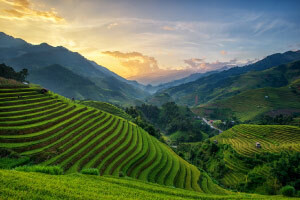Description
The course's central question is "why study wood?" If you are wondering why you should study wood, one answer is that it is the only raw material available to us that is truly renewable in terms of human life span. Despite the development of many man-made substitute materials, changing resource availability, and changing societal needs, wood remains as important to society today as it ever was. Some wood products remain constant (lumber, plywood, and veneer for building construction, furniture, shipping pallets & crates and other containers & packaging materials, railroad ties, utility poles, chemical feed stocks, and so on), but the list also evolves to meet new needs and challenges as the resource changes.
To summarise, wood is a far more diverse, green, and renewable resource than you might think. Join us as we learn about the significance of wood in human history, civilization, and the future.
Syllabus :
1. Welcome and Global Use
- Welcome! Why Study Wood?
- Book Recommendations
- Organization Recommendations
- Forest Cover and Harvests: Part A
- Forest Cover and Harvests: Part B
- Comparing Fuel Values
- Managing Forests
- Harvesting Wood
2. Basic Wood Science
- Wood Structure & Moisture Content: Part A
- Wood Structure & Moisture Content: Part B
- Wood Structure & Moisture Content: Part C
- Wood Challenges and Solutions
- Solving the Riddle
- Stress Tests
- Anisotropic Nature of Wood
- Wood Decay and Preservation: Part A
- Wood Decay and Preservation: Part B
- Wood Decay and Preservation: Part C
3. Wood Products
- Andrew White: Guitar, Part A
- Andrew White: Guitar, Part B
- Andrew White: Guitar, Part C
- Solid Wood Flooring
- Engineered Wood Flooring: Part A
- Engineered Wood Flooring: Part B
- Modern/Engineered Wood Products: Part A
- Modern/Engineered Wood Products: Part B
- Making Engineered Wood Products
4. Wood and the Environment
- Climate Science: Part A
- Climate Science: Part B
- Life Cycle Analysis
- Life Cycle Analysis of Railroad Ties
- Invasive Species: Part A
- Invasive Species: Part B
- Land Use
- Impact of Supply and Demand
- Sustainable Management
- Bonus: Outtakes








